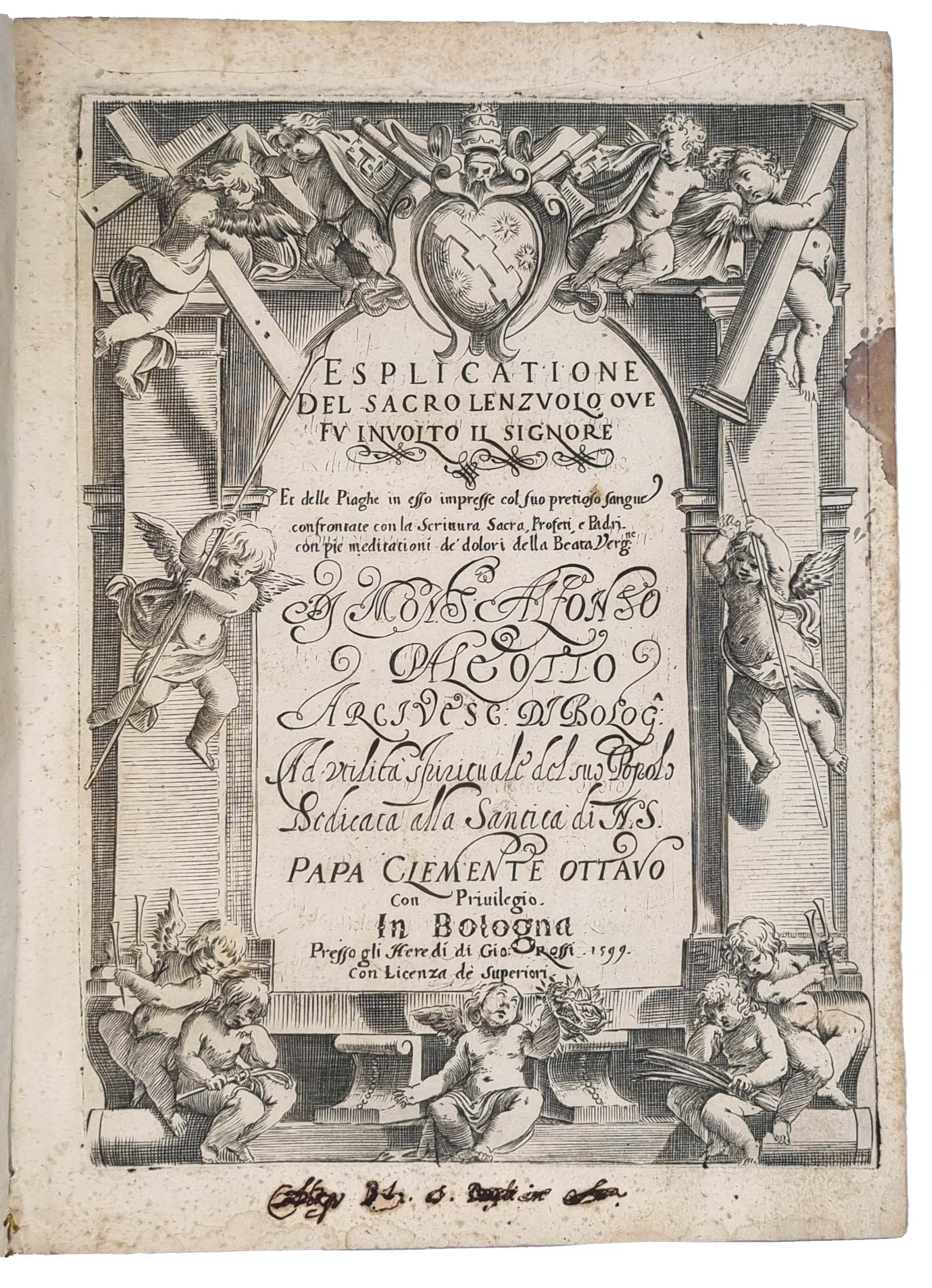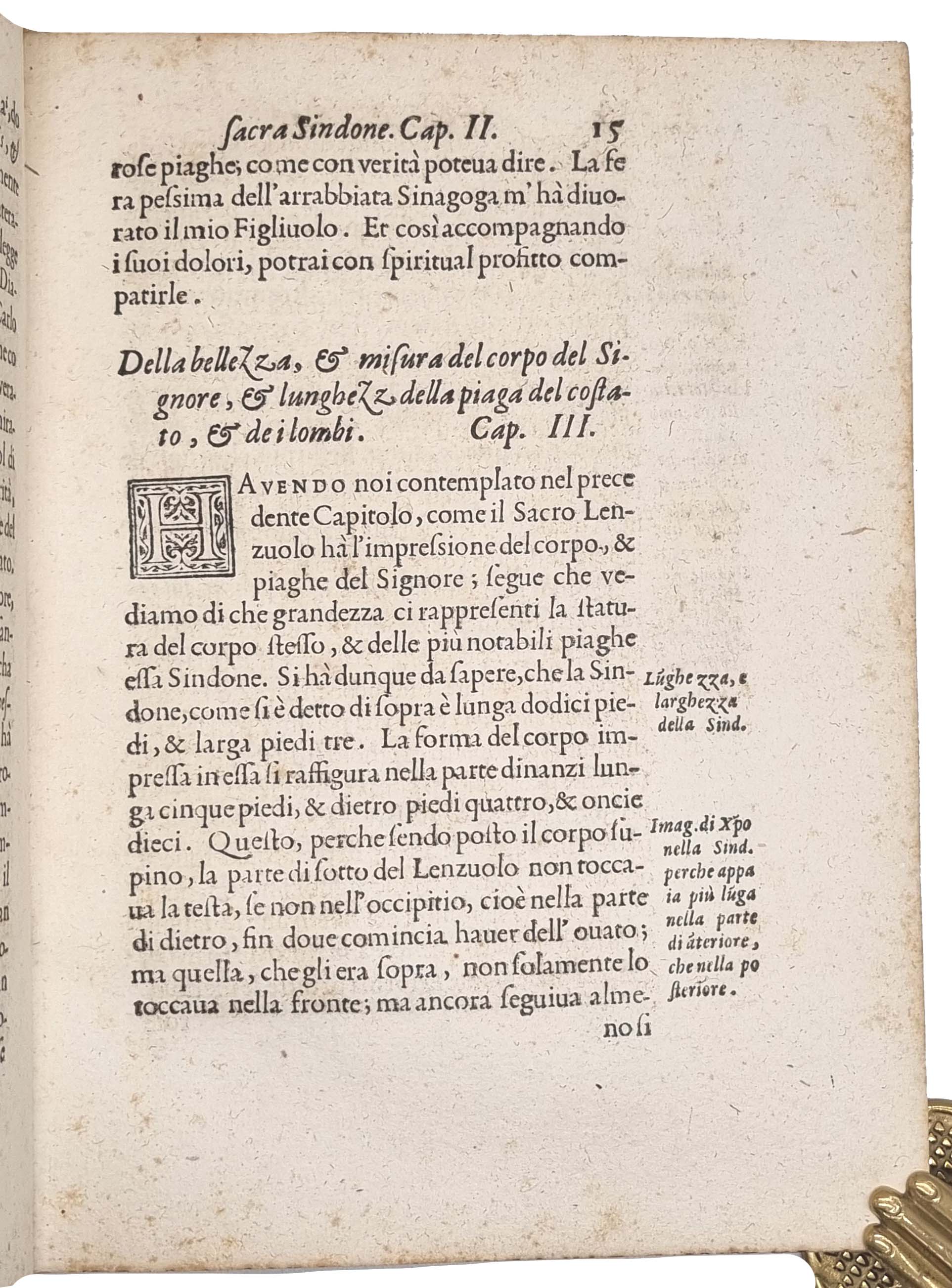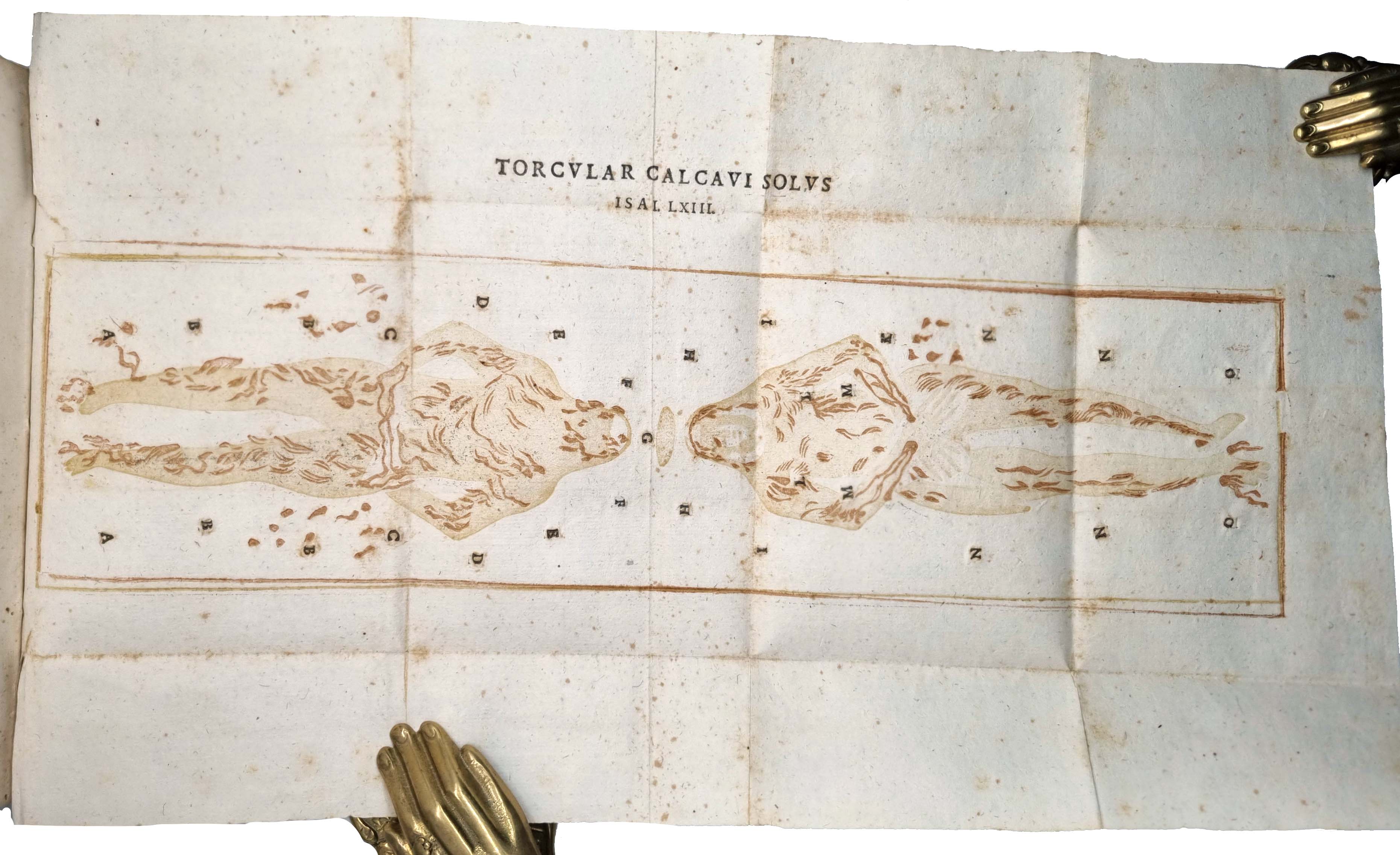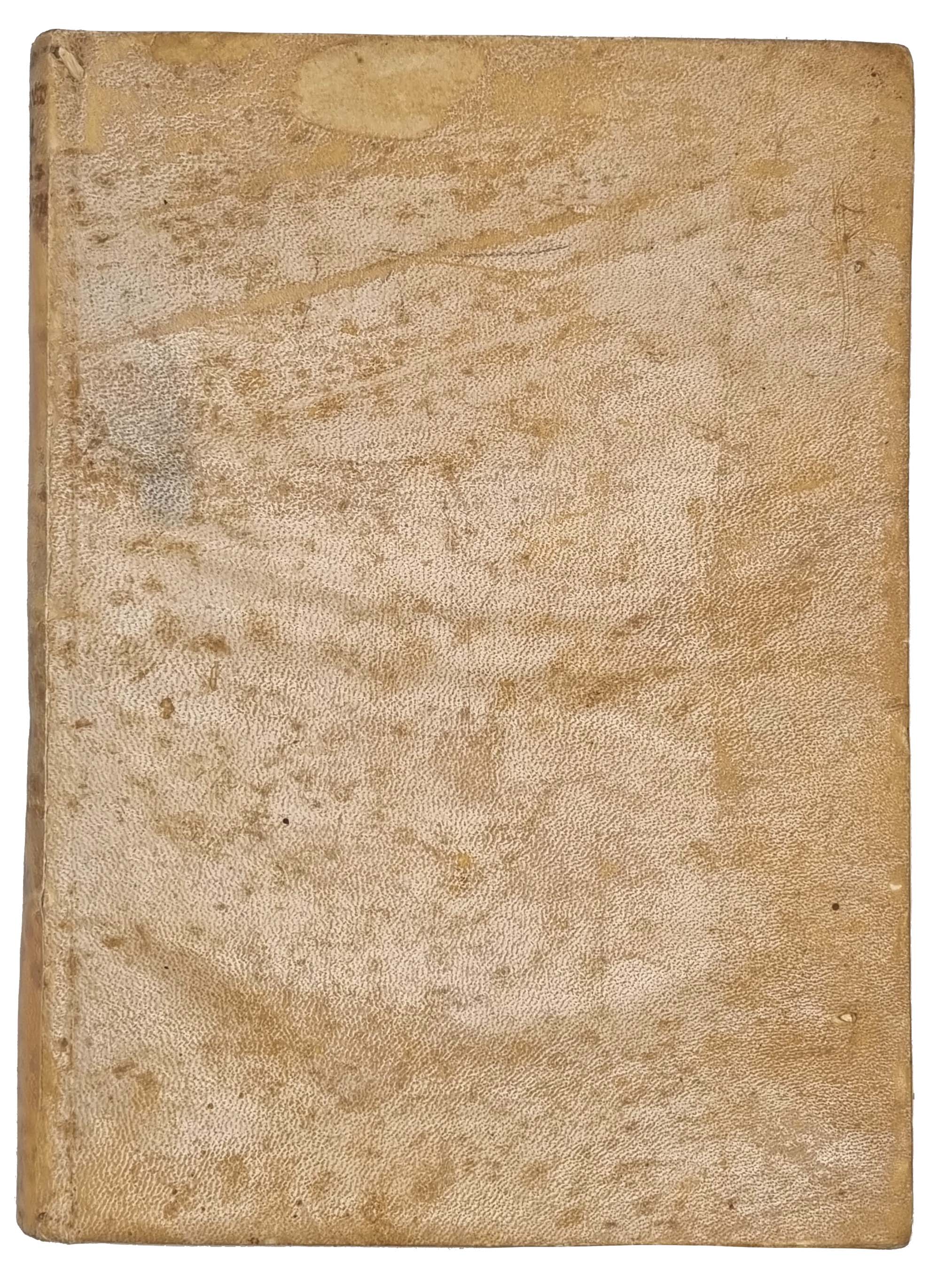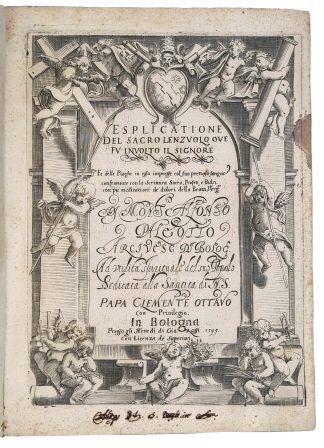PALEOTTI, Alfonso.
FIRST IN COLOUR
Esplicatione del sacro lenzuolo ove fu involto il Signore
Bologna, heirs of Giovanni Rossi, 1599£3,750.00
4to, pp. (xxxvi) 144 (xx) + colour printed folding plate depicting the Holy Shroud. Roman and italic letter, woodcut floriated and historiated initials, handsome engraved architectural t-p with arms of Pope Clement VIII at head and putti holding symbols of the Passion (the cross, crown of thorns, lances and nails), full-page illustration depicting the author before Bologna adoring the Holy Shroud carried by angels. Upper blank margin of t-p partly cut out, ink splash to outer blank margin, a couple of tiny ink burns to cancelled early inscription in lower blank margin. Intermittent light foxing mainly to blank margins, intermittent slender wormtrail to lower margin at gutter affecting a few words on 7 ll. A good copy in contemporary limp vellum, missing ties, early ms. title to lower edge.
Second edition of this fascinating and attractively illustrated treatise on the Shroud of Turin in the Italian vernacular. This is the most important text on the Shroud published since its transfer to Turin fifteen years earlier and one of the first books entirely devoted to describing a single relic.
Doctor of canon law and theology, Alfonso Paleotti (1531-1610) taught for many years at the University of Bologna. After a period in Rome, he was appointed Canon and then Archbishop of the Cathedral of Bologna. “Exposition of the Sacred Shroud” is his most known work, composed – as he explains in the introduction – after visiting Turin with his cousin Gabriele and Cardinal Carlo Borromeo in occasion of the 1582 ostension of the Shroud. This curious treatise, imbued with mysticism, begins with two brief chapters on the history of the Shroud, focusing also on the Roman practices of flagellation and crucifixion. The rest of the volume is dedicated to explaining the fundamental role of the relic for devotion to the wounds of Christ, which are carefully presented one by one with systematic and exceptional precision. The first edition of 1598 was censored and revised by the Holy Office, as Paleotti’s comments on some of the wounds – particularly in chapters dealing with hands and feet – were not in line with the tradition. For example, in the first version of the text,
Paleotti argued that the nails were not inserted in Christ’s hands as it is commonly believed (because they could not have sustained the body), but in his wrists. In this edition, the author delineates Christ’s wounded palms instead.
The text is accompanied by a fold-out plate depicting the Shroud, beautifully printed using three different superimposed colours: ochre for the body of Christ (front and back view), red for the wounds, and black for reference letters. This is the first illustration of the Holy Shroud realised for didactic purposes. In text, every time Paleotti describes the position of each wound and the way
Christ received it, he also notes the corresponding letter on the woodcut diagram at the back of the book.
The splendid engravings in this volume were realised by some of the most prominent members of the prestigious early-Baroque Bolognese School of painting. The full-page scene portraying the author kneeling in adoration before the Holy Shroud, with a view of the city of Bologna in the background, was engraved by Francesco Brizio (1574–1623), who also executed the charming t-p. Remarkably, the preparatory drawing (now at the Louvre) for the plate was made by the renowned painter Ludovico Carracci (1555-1619), who possibly took inspiration from a miniature by the illuminator Giorgio Giulio Clovio (1498-1578, ‘the Michelangelo of the miniature’) in which the Shroud is displayed in a similar way by angels.
USTC 828514; BM STC It., p. 485; Brunet VI, 22341; see Harward C16 It. n. 151. Not in Adams or Graesse.In stock


